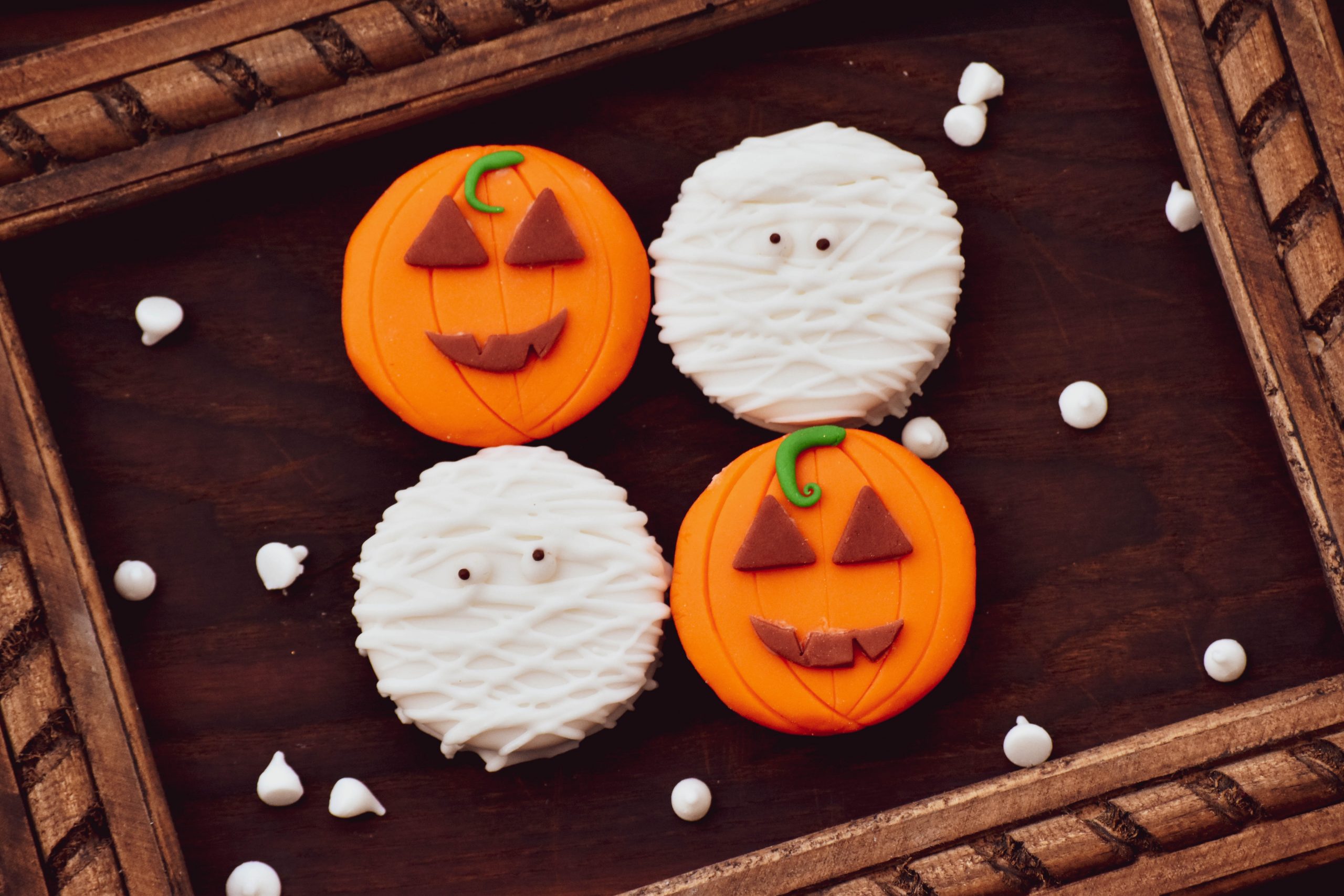
Writer Rebecca Sibley provides an in-depth guide to the spooky beginnings of Halloween, which is steeped in foody traditions, for Food&Drink
There’s something wonderfully gross about Halloween food.
Unlike most other holidays, October 31st isn’t about sitting down to a civilised meal with family and friends. Instead, it’s about feasting gluttonously on sweets, disemboweling pumpkins by shoving your bare hands into their slimy innards, and baking with copious amounts of orange, black or green food colouring. At no other time of the year would we enjoy eating treats in the shape of severed fingers or eyeballs, so why do we do eat so differently on this spooky holiday? October 31st isn’t about sitting down to a civilised meal with family and friends
The story of Halloween and its food starts with a Celtic festival called Samhain which celebrated the harvest and honoured the dead. Bonfires were lit, animals were slaughtered for the feast, and offerings of food and drink were left outside for the roaming souls of the dead. ‘Mummers’ came from door to door in costume and performed verses in exchange for food, like an early version of trick-or-treating.
Much like today, the food at the festival wasn’t just for eating. Food related activities included games and fortune telling. One popular activity was apple bobbing, after which women would throw their apple peels over their shoulder and hope it would land in the shape of their future husband’s initial. Hazelnuts were also used to foretell whether future couples were a good match depending on whether they roasted well on the fire or jumped away from the heat. In Ireland, a rich fruit loaf called Barmbrack was baked with symbolic items inside: a ring meaning marriage, a coin for fortune and a pea for remaining single. To this day, the Irish nibble carefully on their slices to avoid biting into one of the charms.
When Catholicism came to Ireland, many of the Samhain traditions were incorporated into the Christian celebration of All Saints’ Day and All Souls Day. The ‘mummers’ were replaced by ‘soulers’, children and beggars who came to the door to offer prayers in exchange for ‘soul cakes’ (small cakes that were somewhere between a biscuit and a scone). The feast fell out of fashion – the church ruled that All Saints’ Day was one of abstinence and no meat could be eaten. This may explain why we don’t associate Halloween with a meaty cooked meal and prefer sweet treats and baked goods instead. The feast fell out of fashion – the church ruled that All Saints’ Day was one of abstinence and no meat could be eaten
In the 19th century, mass migration from Ireland to the USA brought these traditions to America where they took on a life of their own. The turnips were replaced by pumpkins, and the familiar jack-o’-lantern was born. Imagine – if America hadn’t had an abundance of pumpkins for carving, we may still be sipping on turnip-spice lattes each October! Around the time of this migration, Halloween mischief and pranks were common in Scotland and Ireland, so these became part of the American Halloween, too.
Though ‘souling’ was brought to America by the immigrants, trick-or-treating didn’t appear in the US in its modern form until the 1930s. Trick-or-treaters were initially presented with baked goods, but in the 1950s American candy manufacturers promoted their sweets as the ideal trick-or-treating offering. Giving out sweets soon became the norm in America, partly because sweets were convenient and inexpensive, and partly because parents preferred their kids eating packaged items over potentially dodgy baked goods.
England also had a tradition of ‘souling’, but for a long time the popularity of Halloween was surpassed by Guy Fawkes Night so it wasn’t as common. More recently, we have adopted the Americanised Halloween, with all the tasty treats that accompany it. While some do still bake for the occasion, most people associate Halloween with chocolate, sweets and party games. Apple bobbing has lost its connection with fortune-telling but it’s still enjoyed as a children’s’ party game alongside variants like eating doughnuts off strings and bobbing for gummy worms in jelly. Furthermore, the tradition of pranks and mischief has found a new outlet in gruesome but delicious foods: cake-pop eyeballs, hot-dogs disguised as severed fingers and ‘feet loaf’ (just google it) that make us squirm while we eat.
Many of its food-related traditions have persisted
Comments